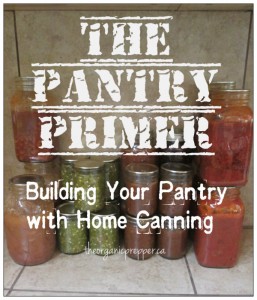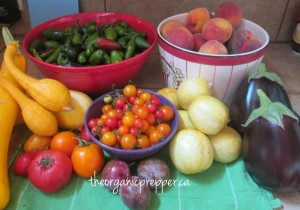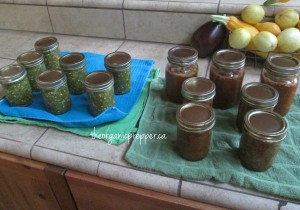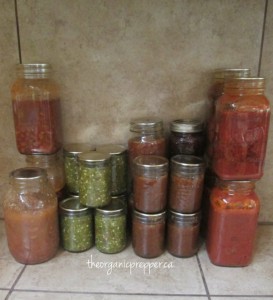This article was written by Daisy Luther the Organic Prepper and was originally posted here.
One of the best ways to build your healthy stockpile is to preserve local organic foods when they are in season. My favorite way to do this is canning.
When you can your own food, you can make delicious entrees and side dishes that can be served as quickly as you can boil water – and the best part of all is that you know exactly what is in those shiny jars. (See The Canning Manifesto to read more about why I choose to can so many foods!)
Making home-canned foods can be a great way to cost-effectively build your pantry for several reasons:
- You can buy in bulk
- You can take advantage of good sales, like “last day” sales
- You can buy what is in season at better prices than when it is out of season
- You can put together “quick meals” far less expensively than buying processed foods by doing a big batch of home cooking to be reheated and eaten at a later date
- You don’t risk losing your stockpile to the vagaries of the power grid like you would by using your freezer
When my daughter eats a biscuit with jam, I know that it only contains organic peaches and sugar. There are no GMOs lurking, no High Fructose Corn Syrup, and no artificial colors and flavors.
Lots of meals for very little money
You can get a lot of bang for your buck by home canning. I recently canned some “meals in a jar” – check out what I spent:
$10 = 7 quart jars of spaghetti sauce with meatballs
$4 = 6 quart jars of Boston Baked Beans
If you were to purchase those items in grocery store cans you’d be spending far more money for far less quality.
This week I have been concentrating on building my pantry with home-canned goods. I’ve made:
- 7 half pints of jalapeno relish
- 3 pints of brown sugar peach preserves
- 4 half pints of jalapeno peach jam
- 7 quart jars of spaghetti sauce with meatballs
- $4 = 6 quart jars of Boston Baked Beans
- 4 pints of wild blackberry jam
- 4 quarts of pinto beans with bacon
I made all of the above for about $35 not including snap lids and spices, which only add nominally to the cost.
Here are some ways to save money by canning
- Don’t decide ahead of time what you are going to can. It’s okay to have a general idea, but if you have specific recipes that require specific ingredients beyond your pantry basics, you may end up spending a lot of money. For example, yesterday I went to a garden exchange and swapped some money and some home-canned goodies for other people’s surplus produce. When I got the items home, I took a look at my bounty and decided what to make based on that. Had I gone to the store or market specifically looking for certain things, I would have spent far more.
- Always fill your canner. If you only have enough ingredients for 5 jars of whatever your making, but your canner holds 7 jars, fill the other two jars with beans. You’re using the same amount of electricity or gas whether the canner is full or not.
- Buy as much as you can when things are inexpensive. Today I’m heading to a local orchard that has a huge sale on just-picked pears. They’re selling boxes of pears (about half bushel sized boxes) for $9 – and it gets better – they’re buy one, get one free! So this means we have some delicious local fresh fruit and enough left over to fill many jars.
- Cook in bulk and can your leftovers. The holidays can supply an enormous amount of ingredients for your home canning endeavors. Also, as the weather cools off, make double batches of chili, soups, and stews and put the leftovers into jars for later use.
- Learn to can with what you have on hand. Going along with tip #1, be flexible and learn to adapt the ingredients you have on hand in canning. Here are some instructions on how to can your own recipes and how to make jam from whatever fruit you have in abundance.
Here are some helpful links:
Go HERE to find tons and tons of my canning recipes and how-tos.
Go HERE to learn about water bath canning.
Go HERE to learn about pressure canning (a necessity if you are canning anything besides fruits, salsa, pickles, and jam).
Go HERE to learn how to sanitize your jars.
Go HERE to learn how to adjust for the altitude where you live.
Also, check out these great websites for more canning ideas:
If you have any questions about canning, please don’t hesitate to ask – canning one of my favorite things to do and I could talk about it endlessly!
If you liked this article please think about sharing it on the social media listed below, thanks!







